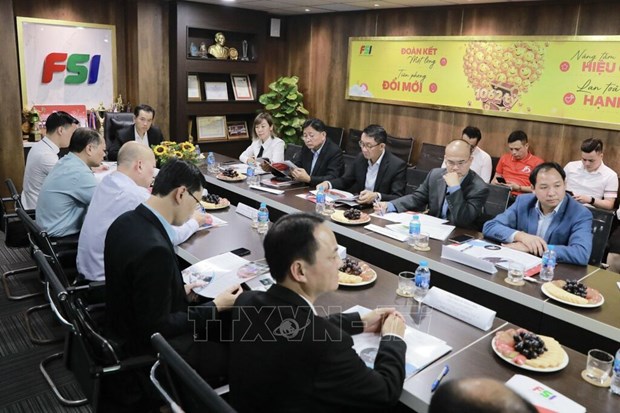 Economy
Economy


|
| At the working session. VNA/VNS Photo |
HÀ NỘI — Lao Minister of Industry and Commerce Malaithong Kommasith on Wednesday led a delegation to FSI Investment and Trading Technology Development JSC (FSI) to explore Make in Vietnam technology solutions that could support Laos' digital transformation in the logistics sector and, consequently, propel economic and trade co-operation between the two countries.
FSI General Director Đoàn Huy Thuận FSI presented the company's extensive ecosystem, encompassing over 50 products, saying that FSI offers digital solutions for the logistics sector with outstanding advantages.
Việt Nam and Laos share a borderline of over 2,330km with a total of 33 active border gates, including 9 international, 6 main and 18 auxiliary border gates.
Border trade plays a crucial role in bilateral economic relations, accounting for up to 90 per cent of the total trade value between the two nations.
Despite this strong foundation, the overall trade turnover between Việt Nam and Laos currently represents only a small fraction of their global trade activity. Laos' total import-export volume sees Việt Nam contributing just 10 per cent, while Việt Nam's global trade involvement reflects minimal engagement with Laos (0.2 per cent).
One of the key constraints hindering expansion of bilateral trade is the high cost of logistics compared to competing countries.
Under the bilateral trade agreement signed on April 8, 2024, both countries agreed to adopt information technology in customs procedures and statistics collection. This presents an effective solution to address the high logistics costs, potentially leading to shorter processing times, reduced business expenses, and increased transparency. — VNS




